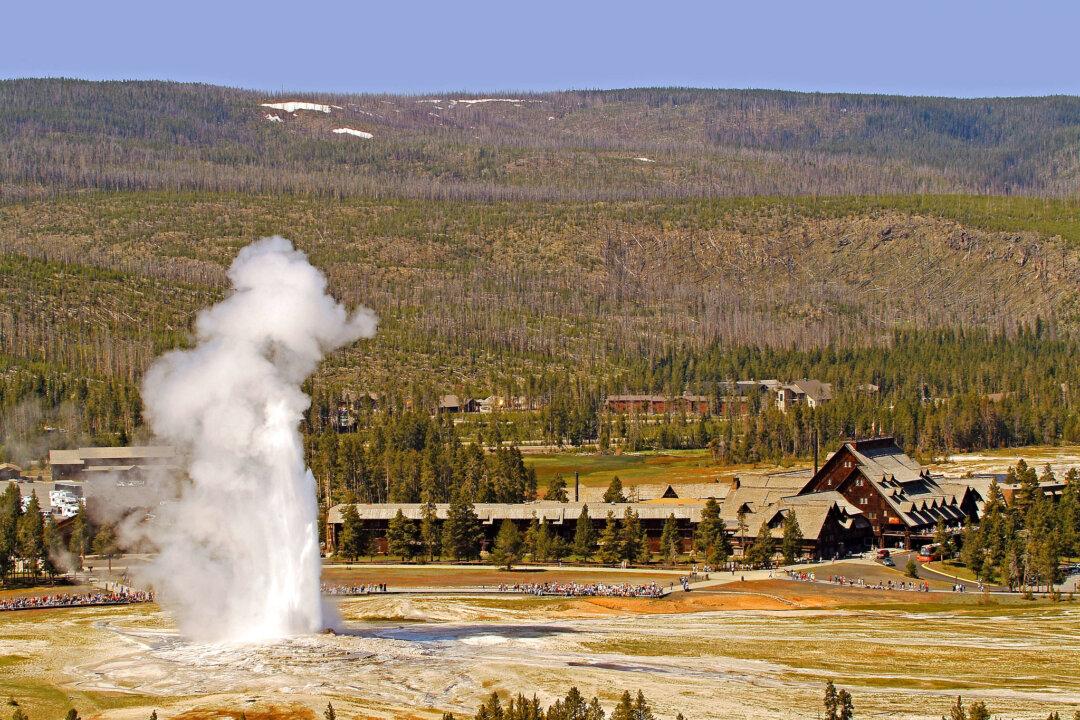The wood at Old Faithful Inn goes every which way: up, down, sideways, and back. Stairs slant, banisters twist, posts soar, hallways veer, and balcony railings look like roller coasters. Structural members are unmilled; planks are rough-cut, un-planed. Posts and rails often sport natural burls, dwarfish bumps, and rings on the tree trunks. The high beams of Wyoming sunlight that lance through clerestory windows 80 feet above the lobby floor make the old lodgepole pine logs gleam amber.
It’s an elvish fantasy of timber, and there’s a heck of a lot of it.





